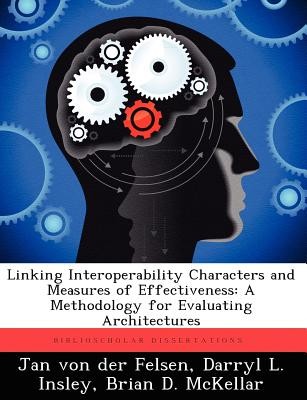
- We will send in 10–14 business days.
- Author: Jan Von Der Felsen
- Publisher: BiblioScholar
- ISBN-10: 1249586348
- ISBN-13: 9781249586340
- Format: 18.9 x 24.6 x 0.7 cm, softcover
- Language: English
- SAVE -10% with code: EXTRA
Linking Interoperability Characters and Measures of Effectiveness (e-book) (used book) | bookbook.eu
Reviews
Description
The Air Force Research Laboratory's Sensors Directorate has crafted a long-term layered sensing project and seeks a method to compare different architectural representations. This research provides an executable methodology for quantitative architecture comparisons based on interoperability characters and measurements. The methodology has two components and is demonstrated on an urban operations mission thread scenario. The layered sensing scenario requires sensor-equipped platforms to shift orbits while supporting a mission (e.g. supply convoy) reacting to unplanned events (e.g. improvised explosive device). The first component is a discrete event simulation capturing relevant sensor, platform, and mission operations and providing measures of effectiveness (MOEs) and measures of performance(MOPs). The second component is an application of a general purpose interoperability measurement technique applied to a scenario demonstrating collaborative interoperability. The results from experimental component comparisons show that changes in interoperability measurements do not always reflect the magnitude of changes in mission effectiveness or system performance. For net-centric applications, changes in the number of process paths may be a better indicator for the degree of interoperability present in a given architecture.
EXTRA 10 % discount with code: EXTRA
The promotion ends in 19d.05:56:52
The discount code is valid when purchasing from 10 €. Discounts do not stack.
- Author: Jan Von Der Felsen
- Publisher: BiblioScholar
- ISBN-10: 1249586348
- ISBN-13: 9781249586340
- Format: 18.9 x 24.6 x 0.7 cm, softcover
- Language: English English
The Air Force Research Laboratory's Sensors Directorate has crafted a long-term layered sensing project and seeks a method to compare different architectural representations. This research provides an executable methodology for quantitative architecture comparisons based on interoperability characters and measurements. The methodology has two components and is demonstrated on an urban operations mission thread scenario. The layered sensing scenario requires sensor-equipped platforms to shift orbits while supporting a mission (e.g. supply convoy) reacting to unplanned events (e.g. improvised explosive device). The first component is a discrete event simulation capturing relevant sensor, platform, and mission operations and providing measures of effectiveness (MOEs) and measures of performance(MOPs). The second component is an application of a general purpose interoperability measurement technique applied to a scenario demonstrating collaborative interoperability. The results from experimental component comparisons show that changes in interoperability measurements do not always reflect the magnitude of changes in mission effectiveness or system performance. For net-centric applications, changes in the number of process paths may be a better indicator for the degree of interoperability present in a given architecture.


Reviews